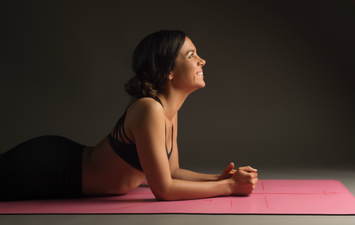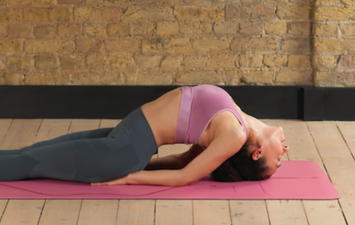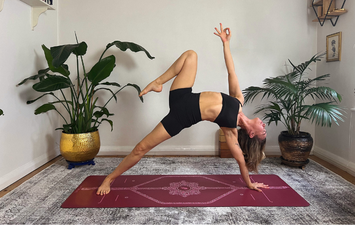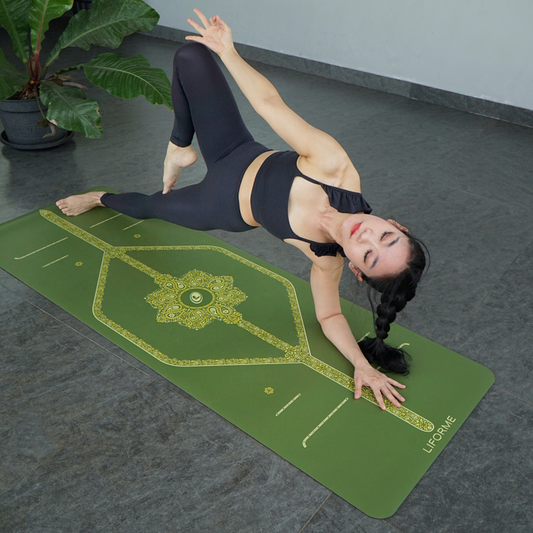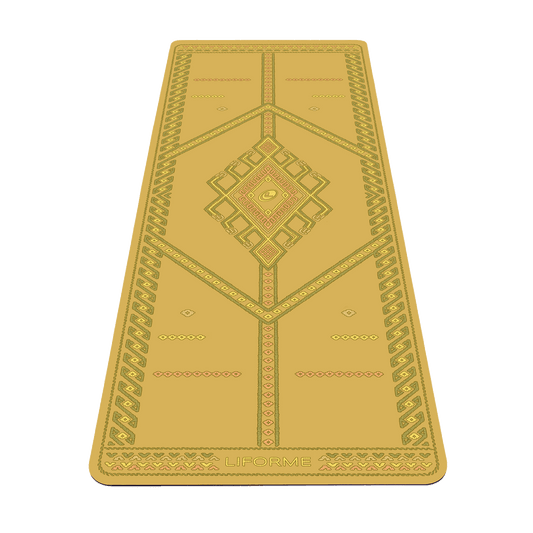Warrior II is one of yoga’s foundation poses, which means that we do it a lot and its alignment is the basis for many other postures. To fully understand Warrior II, we need to talk about its hip alignment and how it differs from Warrior I. The short and sweet version is that in Warrior I, your pelvis faces the front of the mat while in Warrior II, your pelvis faces the side of the mat. If this sounds confusing, we have an in-depth guide to hip alignment with hands-on exercises to help you get a feel for it.
Standing poses are built from the ground up so we’re going to focus particular attention on your foundation, starting with the feet and hips, then moving up to the shoulders, arms, neck and head. In a class situation, you might not have time to go through each of these steps as meticulously so it’s a good idea to occasionally take the time on your own to reaffirm the alignment in your body’s muscle memory. Then when the pose comes up in a flow, you can just drop into it with a series of small self-adjustments.
Benefits of Warrior II
• Strengthens the legs, back, arms and core.
• Opens the hips, hamstrings, and chest.
• Improves body awareness.
Instructions
1. From Downward Facing Dog, step your right foot forward to the inside of your right hand. Bend your right knee directly over your right ankle.
2. Pivot on the ball of your left foot to lower your heel toward the Central Line of your Liforme mat. For Warrior ll, your back foot is parallel to the back edge of your mat (and Liforme’s End to End Lines). Some people like to turn the toe in slightly but make sure that you don’t turn it out. Use the Central Line to position your feet so that your front heel is lined up with your back arch. If you feel unstable with this set-up, you can go front heel to back heel instead for a slightly wider base.
3. Once you have your feet in position, lift your upper body so that your shoulders come over your hips. Put your hands on your hips so that you can feel your alignment for the next step.
4. In Warrior II, your hip points are pointed toward the long edge of your mat so that your pelvis faces the side wall. With your hands on your hips, check your hip position and adjust so that your hip points are level and in the open position. Outwardly rotate both thighs to open the hips.
5. Make sure that your right knee doesn’t drift toward the Central Line but rather stays over the right ankle. Bring your right thigh as close to parallel to the floor as possible. The left leg stays very straight.
6. Ground into the four corners of each foot. Isometrically draw the feet toward each other to engage the entire leg. Engage your thigh muscles to the bone to make sure both legs stay active.
7. Neither flare nor tuck your tailbone. Draw your belly button gently toward your spine.
8. Once your lower body is set, lift your arms and bring them parallel to the floor with the right arm forward and the left arm back, palms facing the floor. Like your pelvis, your chest will face the side wall. Activate your hands to keep energy flowing the entire length of your arms. Relax your shoulders away from your ears.
9. At this point, there is a tendency for the upper body to angle forward as if the right hand were reaching for something at the front of the room. Make sure to keep your shoulders stacked over your hips, using a mirror if necessary to check your stance.
10. Your head faces the front of the room with your gaze following the line your middle finger traces toward the horizon.
11. Take about five breaths to hold the posture while making micro adjustments to your alignment.
Featured Yogi: @adamhusler
Image credit: @yogaandphoto






